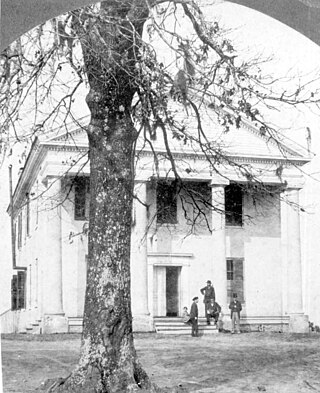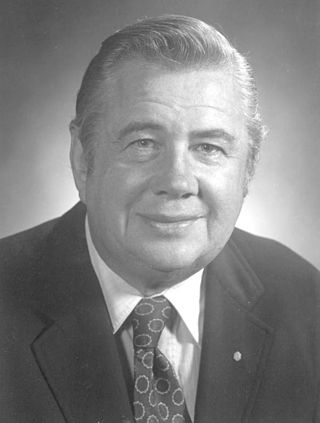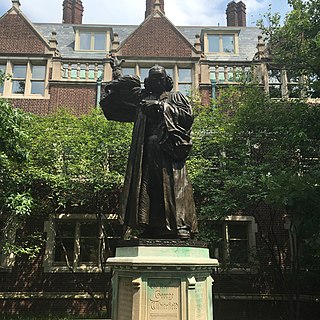
Tallahassee is the capital city of the U.S. state of Florida. It is the county seat of and the only incorporated municipality in Leon County. Tallahassee became the capital of Florida, then the Florida Territory, in 1824. In 2022, the estimated population was 201,731, making it the eighth-most populous city in the state of Florida. It is the principal city of the Tallahassee, Florida Metropolitan Statistical Area, which had an estimated population of 390,992 as of 2022. Tallahassee is the largest city in the Florida Big Bend and Florida Panhandle regions.

Leon County is a county in the Panhandle of the U.S. state of Florida. It was named after the Spanish explorer Juan Ponce de León. As of the 2020 census, the population was 292,198. The county seat is Tallahassee, which is also the state capital and home to many politicians, lobbyists, jurists, and attorneys. Leon County is included in the Tallahassee, Florida Metropolitan Statistical Area. Tallahassee is home to two of Florida's major public universities, Florida State University and Florida A&M University, as well as Tallahassee Community College. Together these institutions have a combined enrollment of more than 70,000 students. It was an area of cotton cultivation. About 30 percent of Leon County is African American. The area includes rolling hills.

Florida State University is a public research university in Tallahassee, Florida, United States. It is a senior member of the State University System of Florida and a preeminent university in the state. Chartered in 1851, it is located on Florida's oldest continuous site of higher education.

Florida Agricultural and Mechanical University (FAMU), commonly known as Florida A&M, is a public historically black land-grant university in Tallahassee, Florida. Founded in 1887, It is the third largest historically black university in the United States by enrollment and the only public historically black university in Florida. It is a member of the State University System of Florida and is accredited to award baccalaureate, master's, and doctoral degrees by the Commission on Colleges of the Southern Association of Colleges and Schools.
The State University System of Florida is a system of twelve public universities in the U.S. state of Florida. As of 2018, over 341,000 students were enrolled in Florida's state universities. Together with the Florida College System, which includes Florida's 28 community colleges and state colleges, it is part of Florida's system of public higher education. The system, headquartered in Tallahassee, is overseen by a chancellor and governed by the Florida Board of Governors.

The Florida State Seminoles are the athletic teams representing Florida State University located in Tallahassee, Florida. They compete as a member of the National Collegiate Athletic Association (NCAA) Division I level, primarily competing in the Atlantic Coast Conference (ACC) for all sports since the 1991–92 season; within the Atlantic Division in any sports split into a divisional format since the 2005–06 season.

Doak S. Campbell Stadium, popularly known as "Doak", is a football stadium on the campus of Florida State University in Tallahassee, Florida, United States. It is the home field of the Florida State Seminoles football team of the Atlantic Coast Conference (ACC).

Thomas Kent Wetherell was an American politician and educator. He served as a member of the Florida House of Representatives from 1980 to 1992, and was president of Florida State University from 2003 through 2009.

Francis Wayles Eppes was an American citizen from Virginia who became a cotton planter in the Territory of Florida and later served as a civic leader in Tallahassee and surrounding Leon County, Florida. After reaching legal age and marrying, Eppes operated the Poplar Forest plantation which his grandfather President Thomas Jefferson had established in Bedford County, Virginia, which he inherited. However, in 1829 he moved with his family to Tallahassee, Florida. Long interested in education, in 1856 Eppes donated land and money to designate a school in Tallahassee as one of the first two state-supported seminaries, now known as Florida State University. He served as president of its board of trustees for eight years.

The Francis Eppes Plantation was a cotton plantation of 1,920 acres (8 km2) situated in east-central Leon County, Florida, United States and established by Francis W. Eppes in 1829.
The history of Tallahassee, Florida, much like the history of Leon County, dates back to the settlement of the Americas. Beginning in the 16th century, the region was colonized by Europeans, becoming part of Spanish Florida. In 1819, the Adams–Onís Treaty ceded Spanish Florida, including modern-day Tallahassee, to the United States. Tallahassee became a city and the state capital of Florida in 1821; the American takeover led to the settlements' rapid expansion as growing numbers of cotton plantations began to spring up nearby, increasing Tallahassees' population significantly.
Mina Jo Powell Alumni Green comprises a half-acre on the campus of Florida State University. The site encompasses a rich history, which includes the green as the original site for Florida A&M University, also located in Tallahassee, Florida. Mina Jo Powell graduated from Florida State University. FSU President Bernard Sliger dedicated the green in her name November 10, 1990. Until 1951, the Alumni Green, as it had been called for nearly a half-century, was the sole site for commencement ceremonies when FSU was called the Florida State College for Women. In 1946, the college's name changed to Florida State University and admission included men. After World War II, and with the influx of nearly ten times the number of students before the War, ceremonies shifted to the newly constructed Doak Campbell Stadium in 1951.

The history of Florida State University dates to the 19th century and is deeply intertwined with the history of education in the state of Florida and in the city of Tallahassee. Florida State University, known colloquially as Florida State and FSU, is one of the oldest and largest of the institutions in the State University System of Florida. It traces its origins to the West Florida Seminary, one of two state-funded seminaries the Florida Legislature voted to establish in 1851.
Florida State University Panama City is located 100 miles (160 km) from the Florida State University Tallahassee campus in Panama City, Florida. Established in 1982, the campus serves more than 4,000 students supported by 20 bachelor's and nine graduate degree programs on campus and online.
The James D. Westcott Building is a historic building on the campus of The Florida State University in Tallahassee, in the U.S. state of Florida. The Westcott Building currently houses the chief administrative offices for Florida State University and is the primary focal point of the campus as seen down College Avenue. The building is also home to Ruby Diamond Auditorium. It is known for its distinctive appearance.

Bernard Francis Sliger was an American educator and economist. He served as president of Florida State University for 15 years, from 1976 to 1991. Nearly all sources referred to him as an extremely "popular" president.
The landmarks and monuments of Florida State University are statues, sculptures, memorials and greenspaces located on Florida State University's Tallahassee campus that are considered culturally or historically significant. The landmarks usually depict a person in the history of the university or represent an ideal that the university holds. These landmarks can also represent a key part of traditions held by the student body.

The Jefferson–Eppes Trophy is an American college football trophy given to the winner of irregularly played games between the Florida State Seminoles of Florida State University and the Virginia Cavaliers of the University of Virginia. The trophy was created on the suggestion of former FSU President Sandy D'Alemberte, after Virginia became the first ACC program to defeat Florida State on November 2, 1995. To that point, the Seminoles had run up a perfect 29–0 record through their first 3½ years of Atlantic Coast Conference play.

The Reverend George Whitefield is a monumental statue which once stood on the campus of the University of Pennsylvania in Philadelphia, Pennsylvania, United States. Dedicated in 1919, it was designed by sculptor R. Tait McKenzie and honors its namesake George Whitefield, Anglican cleric who was a founder of Methodism. In 2020, in reaction to the George Floyd protests, the university administration removed the statue due to Whitefield's defense of slavery.
The FSU Legacy Walk is a historical tour of the Florida State University campus, winding through the entire campus with stops showcasing architecture, green spaces, history and artwork. Legacy Walk medallions and garnet banners are placed to guide visitors along the mostly concrete paths. Raised brick podia display information and maps describing events and people are positioned at intervals on the walk. Bronze statues and monuments reflect the pride and history of the school's alumni and students.













